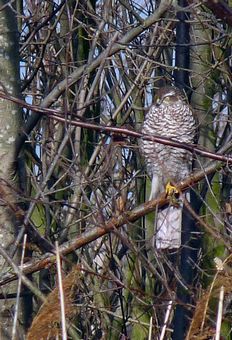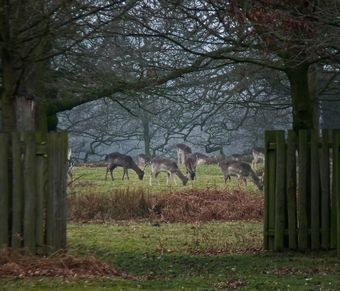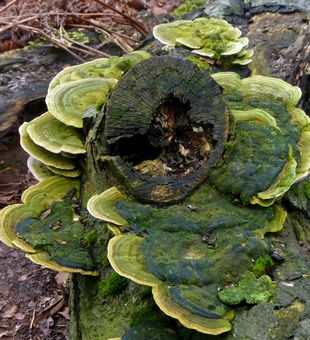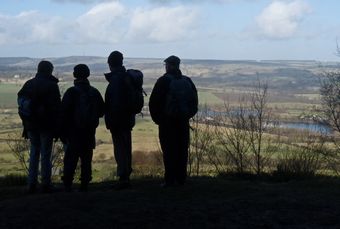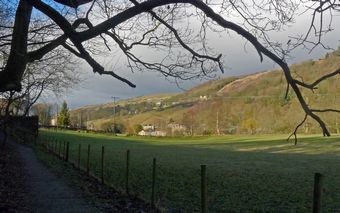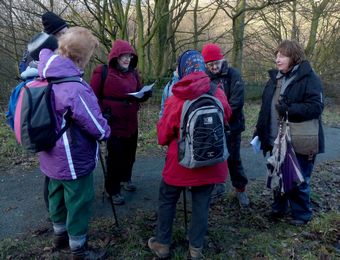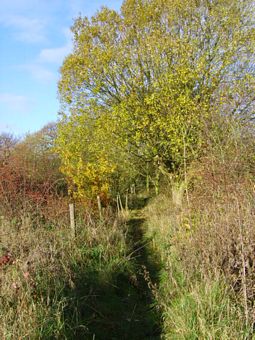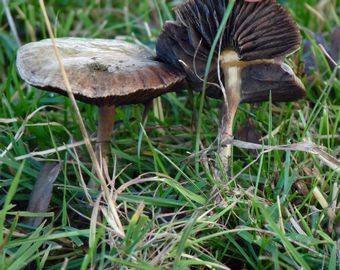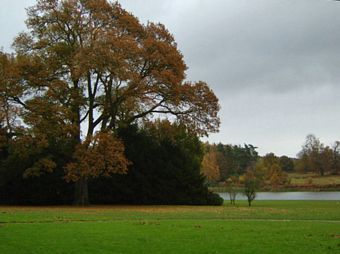 Autumn ColoursWeather conditions were poor when we set off with continuous rain. Intermittent showers and cloud were experienced during the day. The Bees group were well prepared with waterproofs, woolly hats, brolleys and walking sticks (very useful for clearing leaf litter as well as assisting on steep slippery slopes). All but spirits were dampened in our quest for fungi in the wild wood. The party numbered 17 and included Vicki and Peter (friends of Stuart and Gillian) also Julia our mentor.
Autumn ColoursWeather conditions were poor when we set off with continuous rain. Intermittent showers and cloud were experienced during the day. The Bees group were well prepared with waterproofs, woolly hats, brolleys and walking sticks (very useful for clearing leaf litter as well as assisting on steep slippery slopes). All but spirits were dampened in our quest for fungi in the wild wood. The party numbered 17 and included Vicki and Peter (friends of Stuart and Gillian) also Julia our mentor.
A total of 28 fungi species were identified by our mycologist Joan. The day was far more productive than on the previous Wednesday when Joan and Margaret had joined a Yorkshire Dales national park guided walk. The most attractive fungus was green wood cup chlorosplenium aeruginascens found on a log. Clouded funnel clitocybe nebularis were seen in good numbers forming a ring as well as common funnel. Other species included beech wood wart, hypoxylon fragiforme or was it King Alfreds cakes not fully formed ? Also seen black foot polypore polyporus leptocehalus, birch polypore piptoporus betulinus, glistening ink cap coprinellus micaceus, coral spot nectria cinnabarina, candle snuff xylaria hypoxylon, turkey tail trametes versicoloe, purple jelly disc asocoryne sarcoides, lilac bonnet mycena pura and common puff ball lycoperdon periatum. What a mouthful these latin names are! 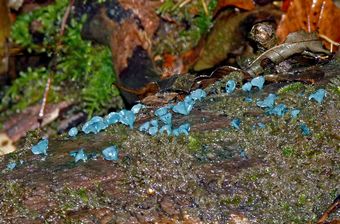 Green Wood Cup Fungus
Green Wood Cup Fungus
The ground cover although not in flower was notable for violet, dogs mercury, rock rose and meadow rue.
There was abundant evidence of the Grass Wood working party's hard work in bringing the wood back to a deciduous woodland and creating a habitat for biodiversity of species. We observed ring barking on a tree creating upstanding dead wood, a haven for insects and birds. Saplings had been planted and were protected either by plastic tubes or a more natural wig wam of sticks and twigs. There were the ubiqiutous log piles havens for insects, reptiles and fungi. The autumnal tints of the leaves of the trees were much admired.
We enjoyed a late lunch in the environs of Far Gregory, an Brigantian hill fort in the centre of the wood which had necessitated a hard climb over slippery limestone steps. Our descent was almost equally hazardous but great care was taken and chivalry shown. We all arrived back at the minibus in good shape.
Birds species were notably absent although nuthatch, tawny owl and chaffinch were spotted in the wood. Tree creeper, blue tit and pheasant were seen near the feeder in the car park. Hopefully we will have sunshine to enjoy the autumnal colours at Clumber park on our next outing.
Margaret
 Tree in the Fog
Tree in the Fog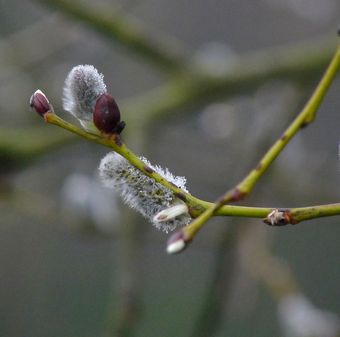 BudsFollowing lunch in the environs of the visitor centre the majority of the party continued the walk in a northerly direction to Shibden Mill Inn, passing blankets of snowdrops, through Shibden village and back into the park.
BudsFollowing lunch in the environs of the visitor centre the majority of the party continued the walk in a northerly direction to Shibden Mill Inn, passing blankets of snowdrops, through Shibden village and back into the park.
